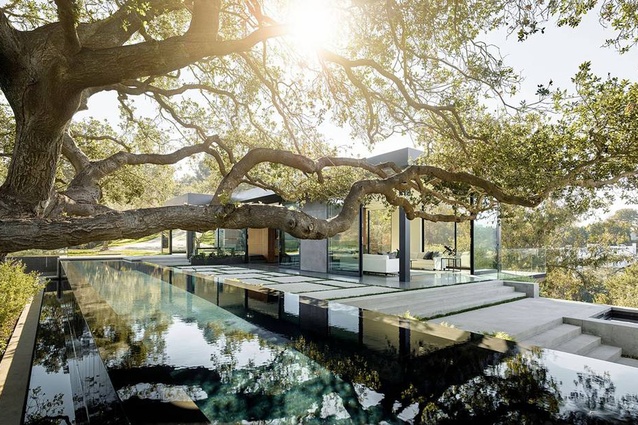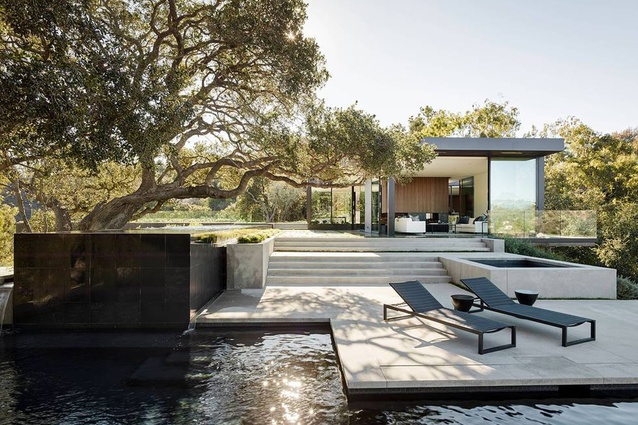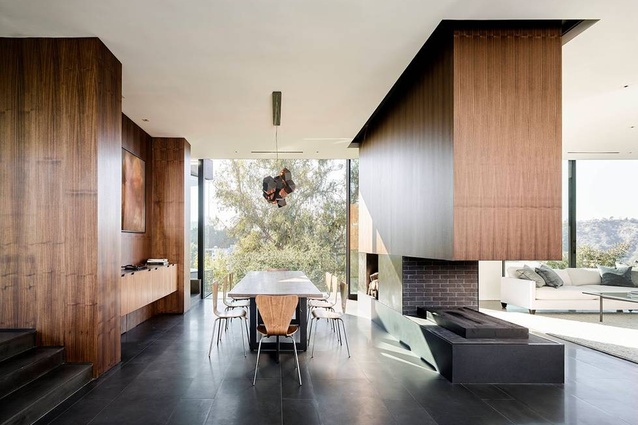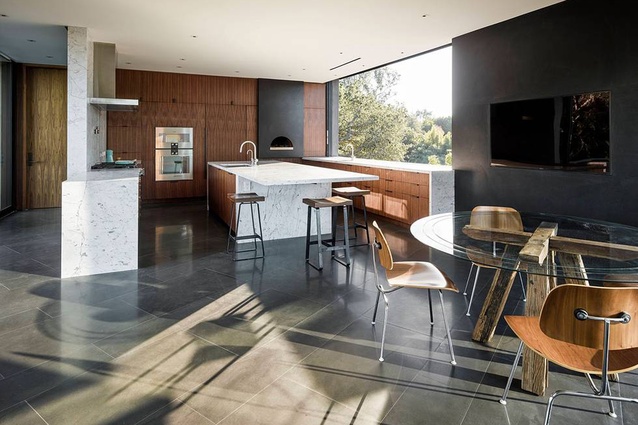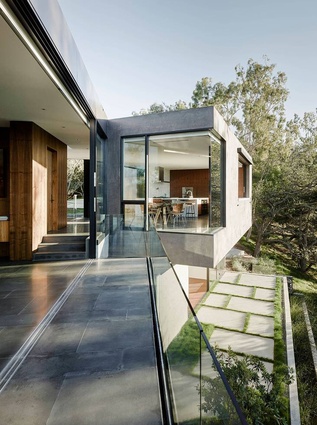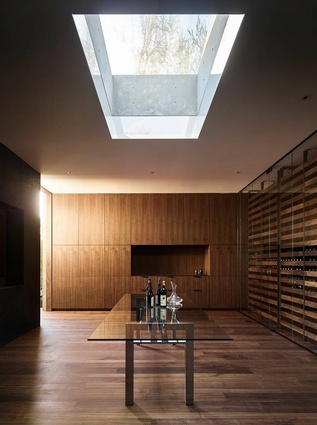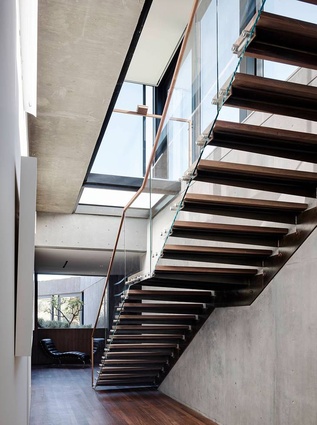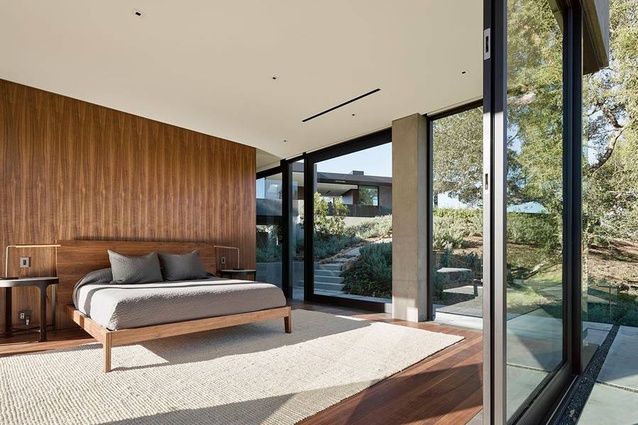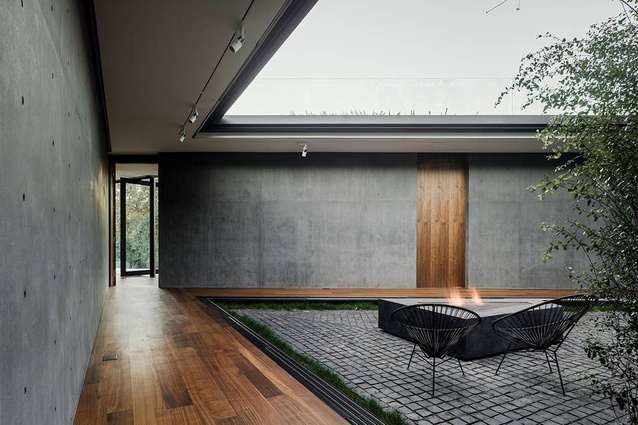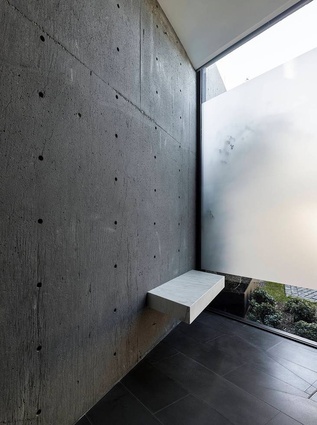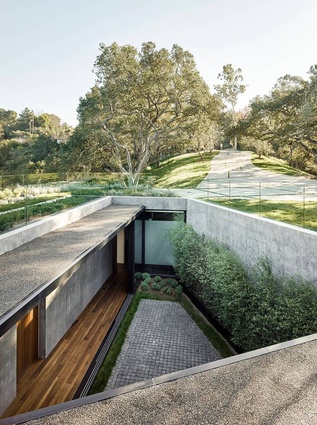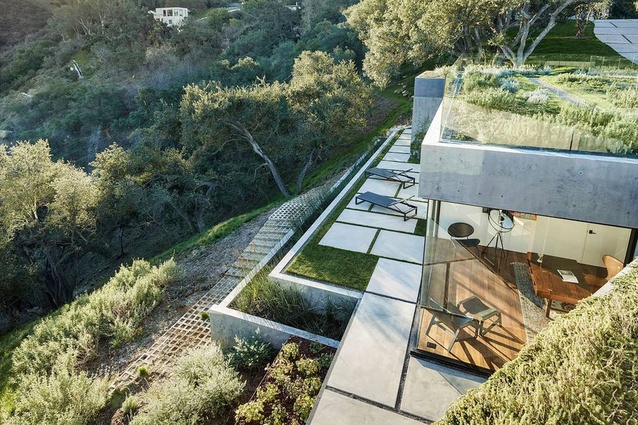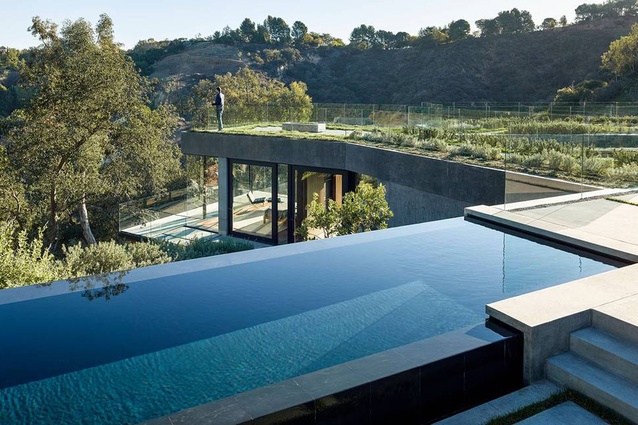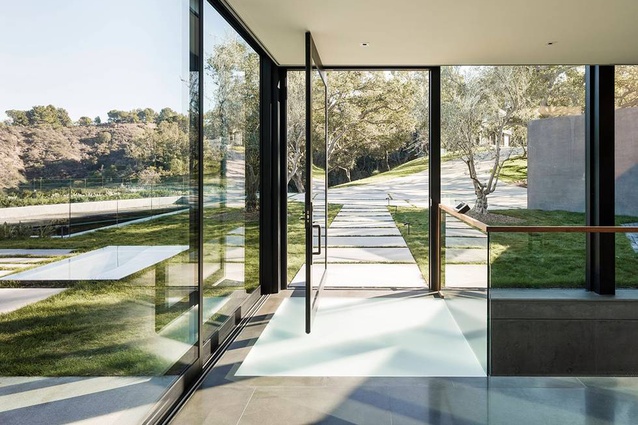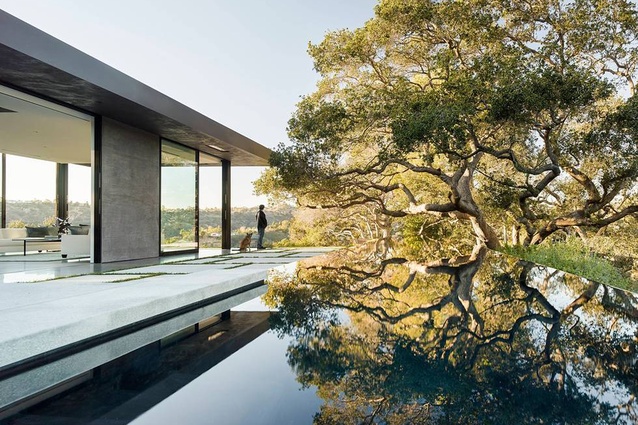The Tree House
There is something about the relationship between the refined and the raw in contemporary homes that seems almost universally appealing.
This, the Oak Pass House in Beverly Hills, California, designed by architect Noah Walker, seamlessly blends both the comfort of a luxurious interior and the roughness of the surrounding landscape.
Walker approached the design of the main house on this family estate with one eye on the celebrated history of modern architecture in Southern California and the other on the need to work with the local climate.
“Original Southern California modernism responded to the lifestyle of Californians in a very temperate climate without a need for heating or air conditioning. So, the approach and forms of modern architecture fitted the location,” he comments.
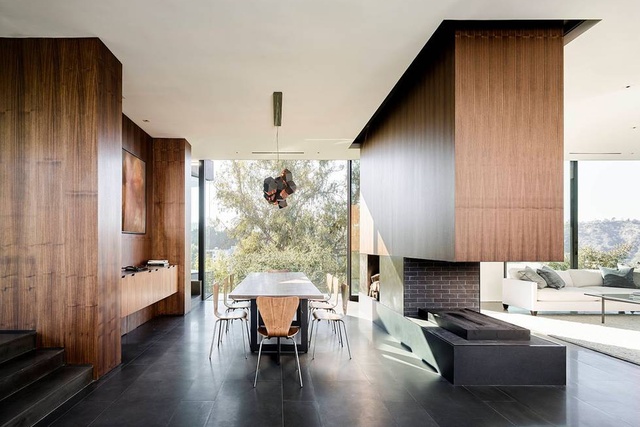
The Oak Pass House develops California modernism in a way that considers both the spectacular climate and views, but also in the way the house is situated on the site.
This is an enormous house (740m2), yet the way it is positioned on the hill makes it feel like a collection of smaller pavilions. It doesn’t dominate the ridge that runs through its site. Instead, by breaking down the bulk of the building, this luxurious home is able to more comfortably fit the scale of the 130 protected oak trees that dot the site.
“The idea for the house was to create pavilion-like structures above the ground, a green roof and bury the other parts of the house within the ridge of the hill,” says Walker.
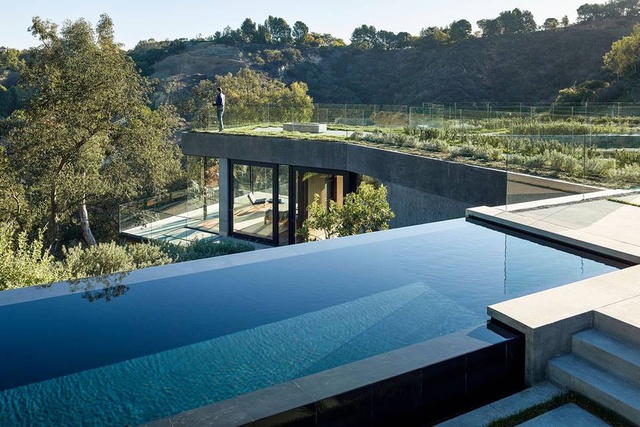
The parts of the house that are buried in the hill are generously given light and air through the creation of clever angular courtyards. Walker designed the courtyards to “create a rhythm in the circulation between spaces with a wide spectacular view and spaces with a tighter intimate view.” These courtyards regularly become sunken outdoor rooms when large glazed sliding doors are opened into the Southern California climate.
“It’s a cinematic house,” notes Walker. “You really only understand it by walking through it as a sequence of spaces.” Each space within the house is treated as its own volume on the site, creating intimate interiors that then open up into the landscape. The master bedroom, for example, projects into the outdoors through large glass sliding doors on all sides. The home creates a balance between the expansive view and the privacy of the viewer.
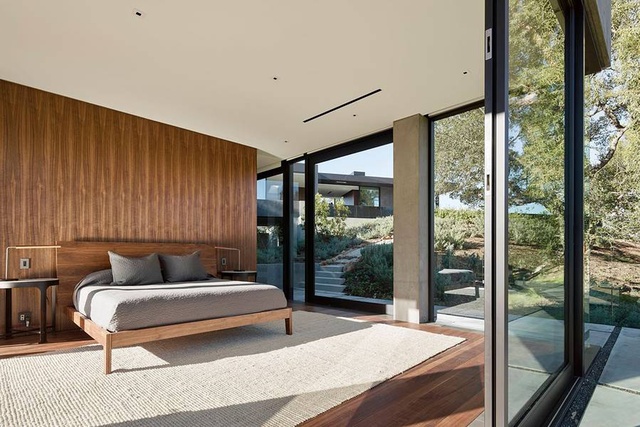
The material palette is crisply modern, but carefully deployed by Walker. “The materials chosen were a response to a perception that modern architecture can be too cold and hard for a comfortable home, the house adopts very modern materials, but includes warmer finishes on timber to create a softer modernism.”
Walker’s approach to creating a softer modernism is reflected in the use of figured plywood cabinetry and walnut flooring in each bedroom. To avoid an overpowering use of concrete, some hard surfaces are replaced with the warm tone of honed limestone. The hanging cabinetry over the fireplace is clad with plywood and emerges from a crisp negative detail in the ceiling with a red brick back.
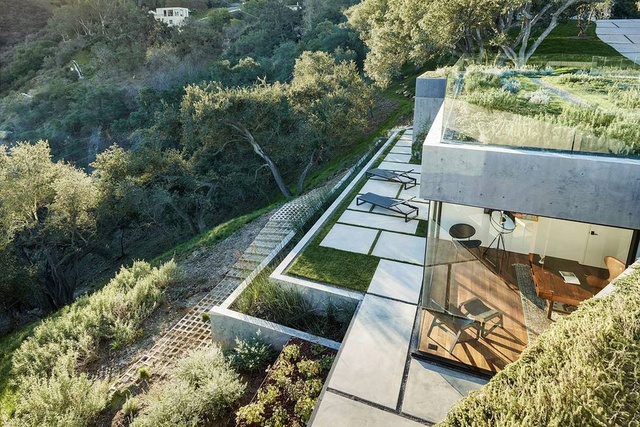
The roof of the house doubles as a lush green terrace, planted in edible herbs. The camouflage of the green roof serves to further stich the house into the surrounding hill. The line between the landscape and the architecture is blurred and this large luxurious home seems to elevate its natural surroundings rather that just observe them. The dance between built elements and the towering oaks isn’t lost on Walker.
“A 22-metre swimming pool, with infinity edges on three of four sides, bisects the house and slips below one of the largest oaks on the property.” The surface of the pool mirrors the home’s namesake trees as a large bough reaches down to the level of a generous terrace.
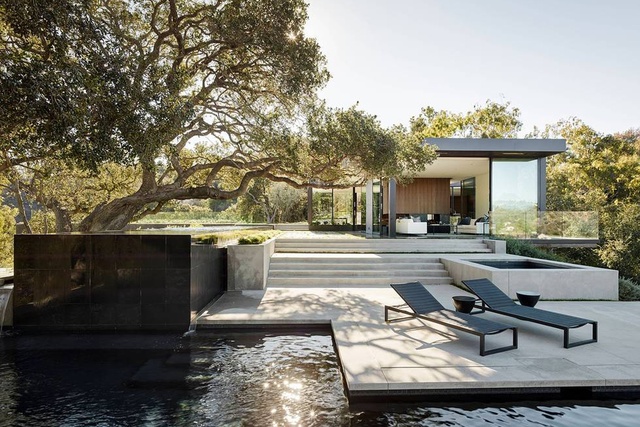
The Oak Pass House is a reflection of Walker’s diverse experience as an architect. His academic background includes such highlights as graduating from Harvard’s prestigious Graduate School of Design. But Walker notes: “My first job was in a cabinetmaking shop because I was interested in how things go together.” That mixture of intellectual training and practical know-how gives the Oak Pass House its balance as a clever and refined home.
Walker notes that his practice is “grounded in the ethos of design-build projects”. His firm carried out the design and build of the Oak Pass House to allow for the fine details of the project to be managed just as planned. For Walker, “becoming a better builder makes you a better architect – it makes you more responsible. Designing for constructability also lends itself to clear modern details.”

